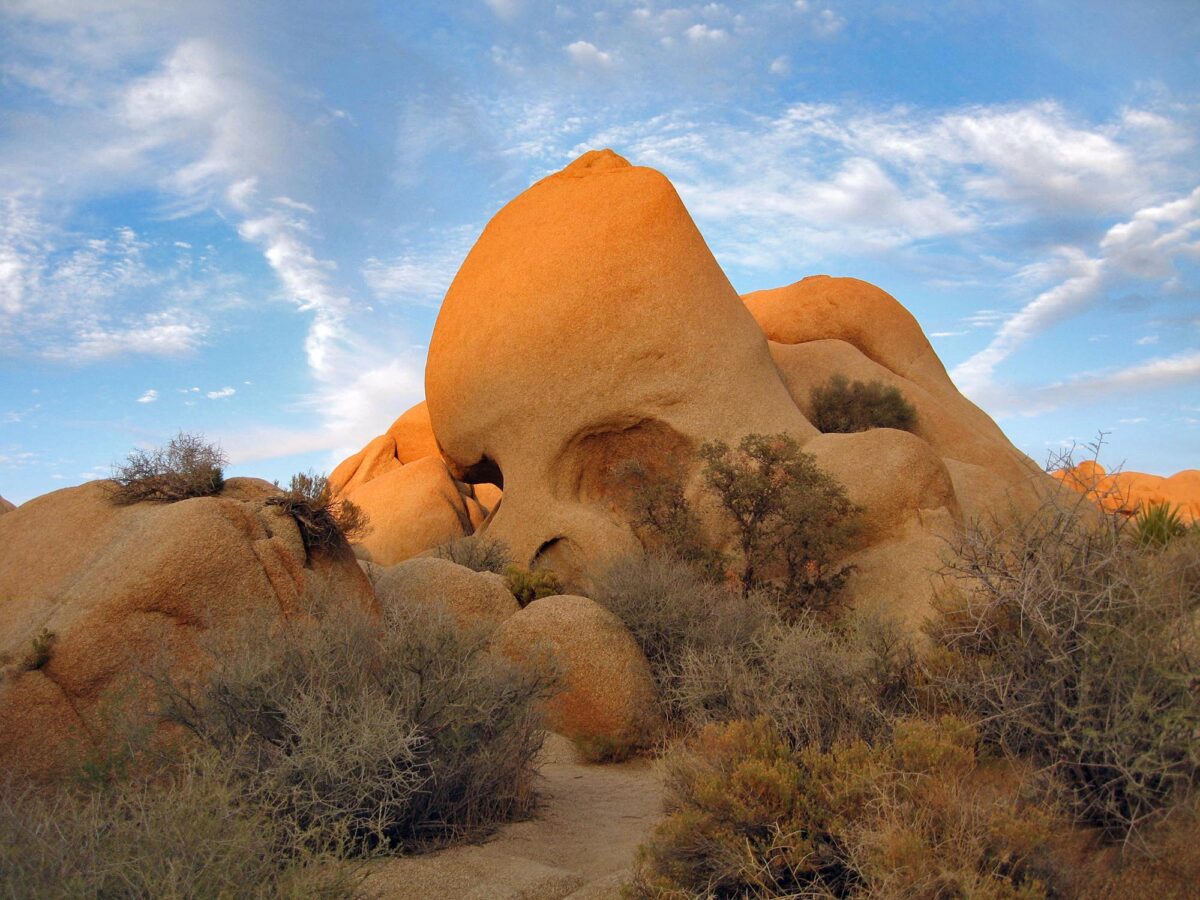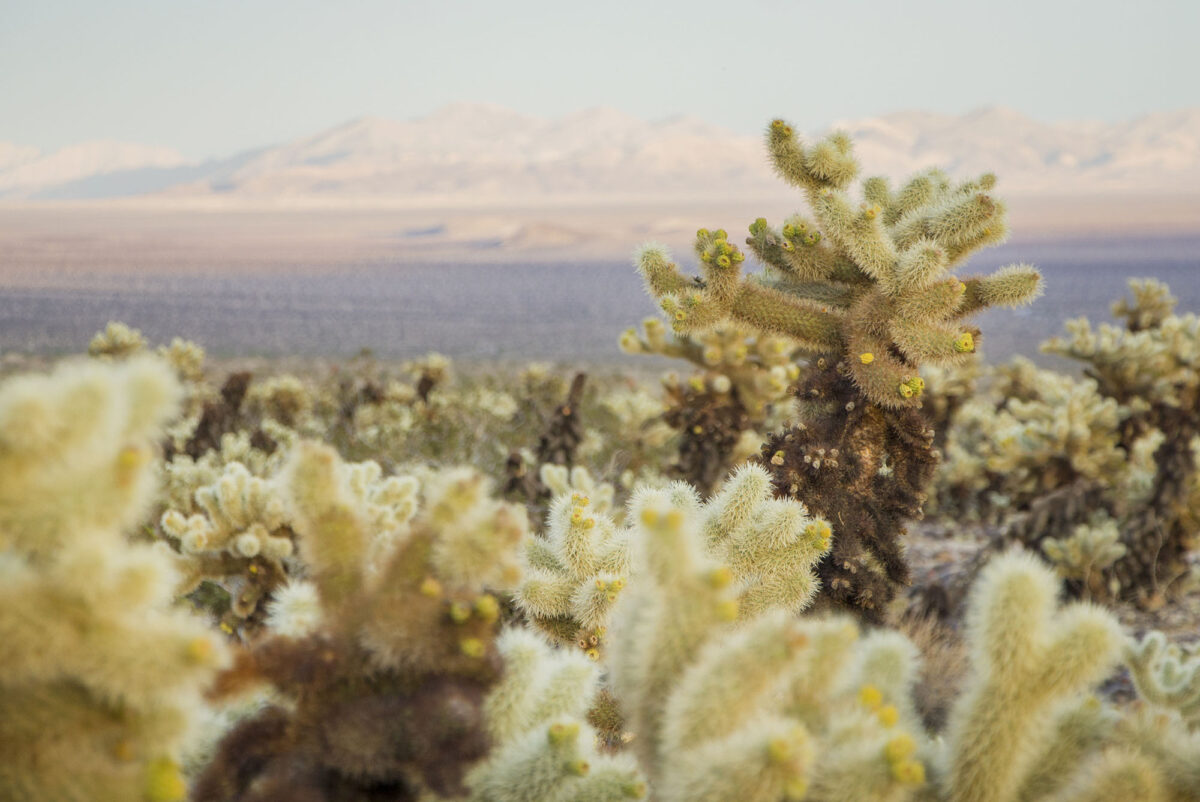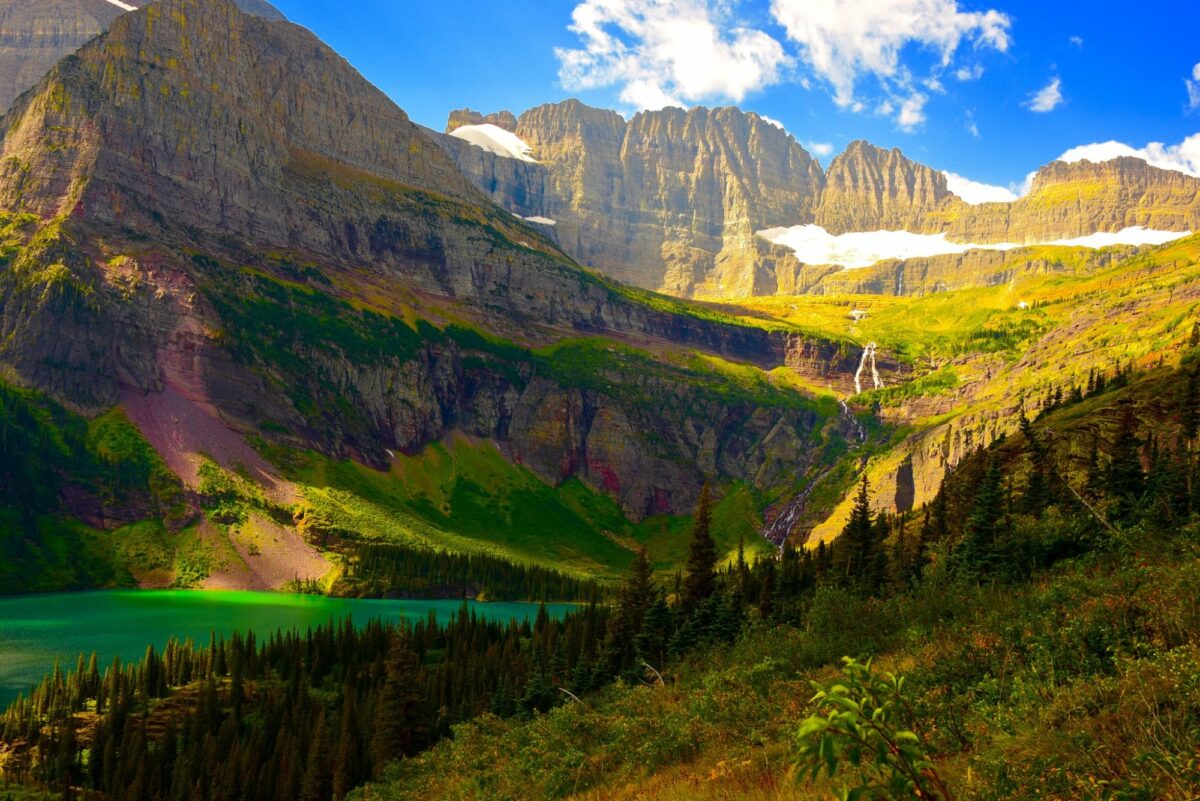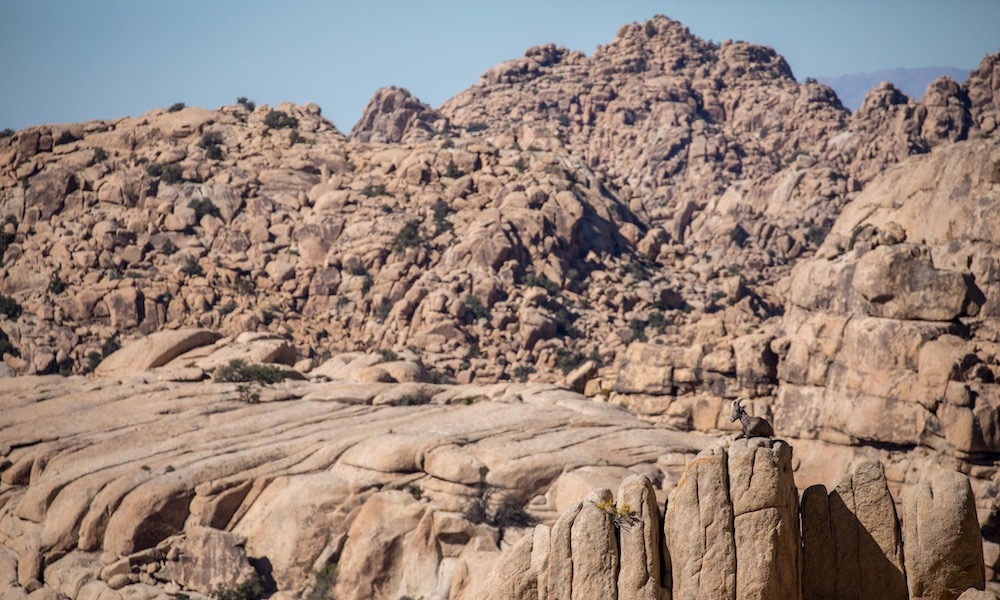Are you looking for a mysterious and spooky place to visit this Halloween? If so, Joshua Tree National Park is the place to be. While many curiosities decorate this famous destination, only one landmark has the honor of being the desert’s spookiest attraction. Here’s what you should know about Skull Rock and why it’s the perfect Halloween sightseeing opportunity.
Joshua Tree visitors will find Skull Rock along the park’s main east-west road. This massive chunk of granite gets its name from the skull-like indentations on the front of the rock. While this spot is no hidden gem, it is popular for a reason. This round-up of Skull Rock info and travel tips will show you why this sight is so beloved.

What is Skull Rock?
Ages ago, raindrops began the slow process of wearing away at a massive slab of granite within Joshua Tree. Over time, the water shaped the rock and created the indentations that give Skull Rock its unique look. Today, the landmark is characterized by two hollow sections that form the skull’s eyes and a third hole creating the illusion of a nasal cavity.
Where can you find it?
As previously mentioned, Skull Rock rests along Joshua Tree National Park’s main east-west road. For the fastest trip possible, enter the park through the North Entrance Station and follow the main road’s signs past Split Rock to reach Skull Rock. If you want to stay the night, you can set up your tent nearby at Jumbo Rocks Campground.

What can you do there?
At Skull Rock, visitors can navigate around the desert brush and up the rocks for a closer view of this spooky sight. Expect to run into other tourists, though. During busy seasons, you’ll probably have to wait your turn for a picture in front of this magnificent rock.
If you want to get a little more out of your visit, go for a hike along Skull Rock Trail. Keep an eye out for cool cacti along the 1.8-mile loop trail.





